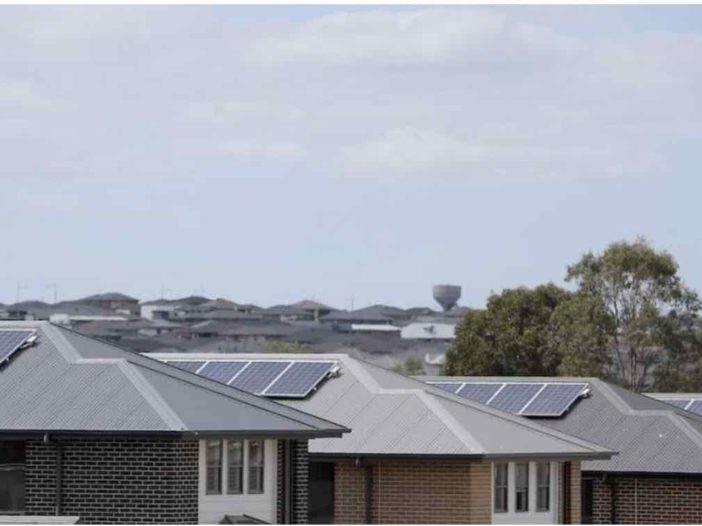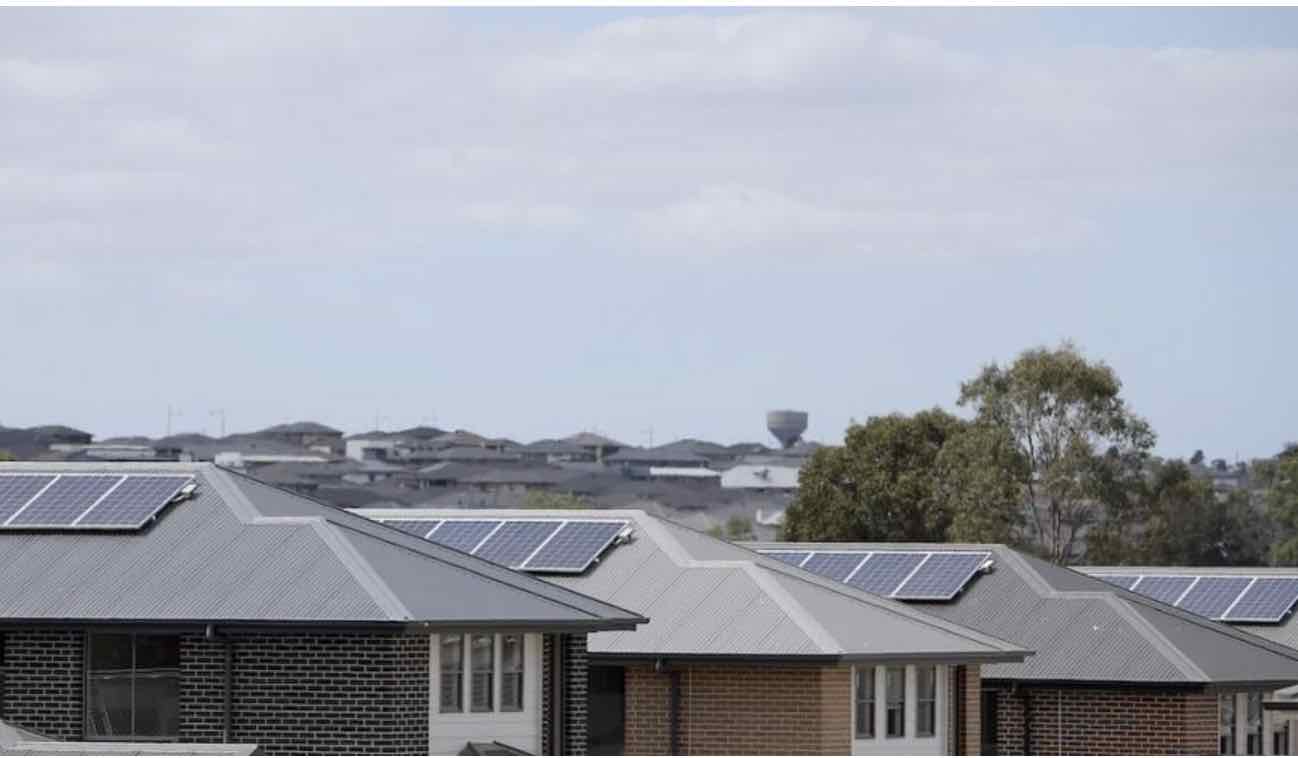
The following article is one of seven finalists in the 2019 Gill Owen Essay Prize, which honours the memory of Dr Gill Owen, who was a tireless campaigner in the fields of energy efficiency and social equity. The competition is sponsored by AGL Energy, the Institute for Sustainable Futures at UTS, the Association for Environmental and Energy Equity, Uniting Communities and RenewEconomy. The finalists’ essays will be published in Renew Economy between Monday 17th February and Tuesday 25th February.
A passionate and pioneering campaigner for social justice, Gill Owen was one of the first women to bring the voices of the consumer and the disadvantaged to the boards of the UK’s and Australia’s competition and economic regulators. Gill advocated passionately for these causes until her untimely death from an aggressive brain tumour in August 2016.
To celebrate Gill’s contribution to empowering disadvantaged consumers, and improving energy efficiency, the Gill Owen Essay Prize invites emerging voices under the age of 35 to offer their own perspective on energy efficiency and social equity. The overall winner of the 2019 Gill Owen Essay Prize will be announced at the Dr Gill Owen Forum: Fairness for consumers in the energy transition, hosted by the Australian Energy Regulator in Melbourne on Tuesday 25th February 2020. The overall winner receives a prize of $3000 and the runners up receive a prize of $1000 each.
Energy efficiency, the construction sector, and a uniquely Australian just transition, by Patrick Lau
Imagine, if you will, waking up to a world with two Germanys.
Not in a Cold War sense; not waking up to learn that the wall had sprung back up to slice the Brandenburg Gate in half again. No – imagine waking up to find Germany had inexplicably, mysteriously, wondrously replicated itself overnight, and this new nation was floating in the middle of the Atlantic. Our new Deutschland-doppelganger is an exact twin of the original – it has all the same beer halls and bratwurst stalls, markets and autobahns, forests and factories. And, also like the original, it has a GDP of roughly USD$4 trillion.
The International Energy Agency (IEA), in its 2019 Energy Efficiency Report, has suggested that’s the amount that could have been added to global GDP “had energy intensity improved at 3% every year since 2015”. We could have doubled the world’s fourth-largest economy, according to the World Economic Forum (WEF), in just four short years, with a tiny bit of attention and effort.
There’s an element of magical thinking there, even without the Malthusian nightmare of adding a Germany every four years. Modelling is always inexact, and a 12% global gain in energy intensity is not an immodest challenge. Nonetheless, it’s a necessary one to address.
We’ve watched government after government in Sisyphean attempts to scrape energy policies together like dung beetles, shove them uphill, and get flattened when they lose their grip.
In the process, we’ve become a nation riven between coal gluttons and windmill-hugging sun worshippers. It’s not by design that we’ve managed to do so well, so far. We remain the lucky country, run mainly by second-rate people who share that luck.
But in crisis, opportunity. Circumstances have devolved into a kind of inverse Pareto optimality, in which there are very few moves which would not benefit every stakeholder. To put it another way, almost any energy policy put forward and enacted with consistency would improve energy outcomes for households, businesses, and the environment.
Whichever your triad of choice – the ‘trilemma’ or triple-bottom line – it’s particularly difficult to marshall an argument against improving energy efficiency. It can be framed as a productivity enhancer, as environmental protection or climate action, or as a pathway to social equity.
The benefits on offer mean that it’s not a vote-killer with any segment of the electorate; but crucially, those benefits only flow if implementation is taken seriously.
Massive, systemic investment in energy-efficient buildings needs to be the starting point
In all likelihood, if you’re reading this now you’re likely already among the converted: those wonkiest of wonks, the energy efficiency enthusiasts. But the headlines bear repeating.
The IEA has declared energy efficiency is the “first fuel”, and a 1.2% improvement in primary energy intensity added USD$1.6 trillion to global GDP last year. Sadly, but unsurprisingly, Australia is now the worst-performing major developed economy when it comes to taking advantage of this windfall.
Claims that Australia, or South Australia in particular, has the world’s highest residential electricity prices have been fact-checked and disproven repeatedly. But the huge amounts of new transmission infrastructure needed to connect utility-scale renewables, alongside grid resiliency overhauls as extreme weather increases, may mean network charges and thus prices go up in the near future.
While demand response (DR) technologies are seen by some as an answer to Australia’s unique grid situation (high distributed solar take-up, high peak summer demand, generation fleet), Dr Gill Owen has pointed out that DR must be predicated on energy efficiency measures “to make vulnerable households more resilient to the development of demand side
management”.
“It would be helpful,” Owen adds, “to have a national [energy efficiency] framework, with incentives to reduce peak as well as overall demand, that allows for some flexibility to meet different circumstances in different states.”
Fortunately, there’s a host of such initiatives underway, including the development of the Trajectory for Low Energy Buildings, the ongoing evolution and increasing success of schemes like the National Australian Built Environment Rating System, and the willingness of institutions like the Clean Energy Finance Corporation to fund large-scale residential efficiency.
Policy, economics, and environmental awareness are coming together to drive a significant shift in energy efficiency thinking.
Energy efficient building activity and the just transition
Most discussion of energy efficiency and the just transition revolves around equitable access to electricity for disadvantaged socio-economic groups. But in the Australian context, the just transition also means equitable access to employment for construction workers.
The construction sector’s contribution to GDP, and share of employment, are around 8-10% – far higher than mining on both counts. A significant portion of the million-strong construction workforce are sole traders or small businesses, and the work available to them fluctuates wildly.
Construction activity is currently slowing and was down more than 11% in the 2018-19 financial year, with residential accelerating to overtake civil engineering.
Recent attention to building cladding and even structural integrity issues have instigated widespread overhaul of the construction sector, even before addressing the ongoing need to improve current stock’s efficiency. It’s likely that retrofits and refurbishments will have a role to play in soaking up any unemployment.
Two-thirds of the non-residential buildings standing in 2050 will be newly-built or refurbished, according to a report by Energy Action for the COAG Energy Council. That overlaps closely with the 60% more building space by 2040 that could be added without using an extra joule of energy, according to the IEA, by doubling investment.
Meanwhile, insurers are increasingly warning that flood and fire risks will make parts of the country uninhabitable, and Professor Mat Santamouris has demonstrated that urban heat islands including Western Sydney will experience disproportionate effects from climate change.
Residents are not only concerned with the value of their homes, but with their sustainability and even their continued existence, and undoubtedly more and more will be following the Mobbs’ example in retrofitting existing stock.
While the Rudd government’s notorious Home Insulation Program (the ‘pink batts scheme’) did have some positive impacts on energy usage, it resulted in four deaths, allegations of fraud and rent-seeking contractors, and property damage. The fraught rollouts of the NBN and Victoria’s Solar Homes Package have also demonstrated that close oversight of similar programs is necessary.
However, Rudd’s stimulus and nation-building programs are widely credited with helping the country avoid recession during the Global Financial Crisis; similarly, the housing boom and the infrastructure programs rolling out across the nation have kept us afloat.
But the Australian economy retains serious structural problems, not least among them a reliance on primary production and a single major trading partner, and a degree of coordination or public spending, if not central planning, is necessary to maintain momentum.
Energy efficiency offers a channel to address energy and climate challenges, at a household and national level, while also solving some of the uniquely Australian problems that we’ve set ourselves.



